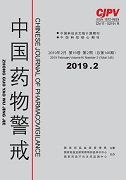|
|
Incidence of Cardiac Adverse Events of Cisapride: a Systematic Review and Meta-analysis
SUN Yixin, MENG Kangkang, XIA Yukun, XIONG Weiyi, DENG Siwei, DONG Duo, ZHAN Siyan
2019, 16(2):
94-100.
Objective To systematically evaluate the incidence of cardiac adverse events of cisapride. Methods CNKI, VIP, WanFang and SinoMed databases were searched for eligible studies reporting the cardiac adverse events of cisapride from 1994 to 2018, using the chemical names or trade names of cisapride as keywords. Two researchers independently screened literature according to the inclusion and exclusion criteria, extracted data and assessed the quality of included studies. Random-effects Meta-analysis was conducted to pool the incidence of cardiac adverse events, and subgroup analysis was performed based on the population, mode and dosage of medicine. Results A total of 53 articles were included, involving 57 researches. In 38 studies with small sample size, the results of Meta-analysis showed that the overall incidence of cardiac adverse events was 5.61% (95% CI: 3.49%, 8.10 %). The adverse event reported most was palpitation, followed by QT prolongation and arrhythmia, with the pooled incidence of 4.10% (95% CI: 2.84%, 5.54%), 10.98% (95% CI: 5.13%, 18.34%) and 0.40% (95% CI: 0.00%, 1.44%), respectively. Three database studies with large sample size, which focused on cisapride and the risk of arrhythmia, reported the incidence of arrhythmia ranging between 0.91 and 1.28/1 000 person-years. The subgroup analysis suggested that children had higher risks of QT prolongation. 16 case reports included 17 adverse events, most of which were severe adverse drug events, such as QT prolongation and torsade de pointes. Three cases with comorbidity died, which suggested the cardiac risk of cisapride may increase for some special patients. Conclusion Cisapride was associated with potential cardiac toxicity. Prescribers should strictly follow the indications and contraindications to ensure clinical medication safety.
References |
Related Articles |
Metrics
|
